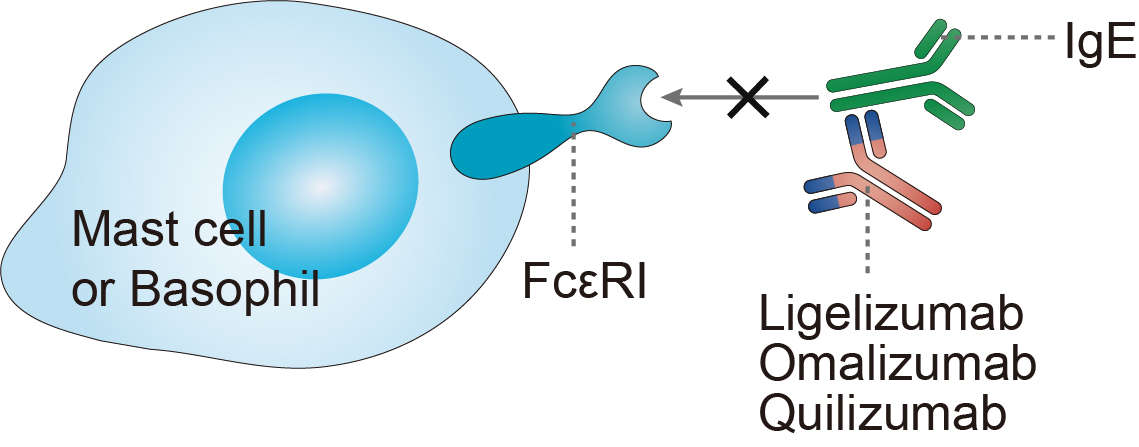Omalizumab Overview
Introduction of Omalizumab
Omalizumab is a recombinant DNA-derived humanized IgG1κ monoclonal antibody (mAb) designed for the treatment of asthma and urticaria. It specifically binds to free human immunoglobulin E (IgE) in the blood and interstitial fluid and to membrane-bound form of IgE on the surface of mIgE-expressing B lymphocytes. Unlike an ordinary anti-IgE antibody, it does not bind to IgE that is already bound by the high affinity IgE receptor (FcεRI) on the surface of mast cells, basophils, and antigen-presenting dendritic cells. Omalizumab is a glycosylated IgG1 monoclonal antibody produced by cells of an adapted Chinese hamster ovary (CHO) cell line. The antibody molecules are secreted by the host cells in a cell culture process employing large-scale bioreactors. At the end of culturing, the IgG contained in the medium is purified by an affinity-column using Protein A as the adsorbent, followed by chromatography steps, and finally concentrated by UF/DF (paired ultra-filtration/depth filtration). Omalizumab was for several years provided only in a dry powder formulation, which requires the reconstitution with a prepacked solvent with the help of a shaker at the treating clinician’s office before injection. A prefilled syringe liquid formulation has become available in many countries.
Mechanism of Action of Omalizumab
Omalizumab is a recombinant humanized monoclonal antibody that was designed to bind to IgE on the Fc (constant fragment) portion, C epsilon 3 locus, in the same domain where IgE is bound to FcεRI. This drug was synthetized with the aim of sequestering free IgE and reducing allergic inflammation. The drug is administered subcutaneously and is absorbed slowly. The peak of serum concentration is reached after 7-8 days and it is eliminated via the reticuloendothelial system, having a half-life of around 26 days. It has been accepted for a long time that omalizumab acts on the free IgE and may abolish the binding of IgE to FcεRI+ or FcεRII+ (CD23) cells, B-cells, dendritic cells (DC), eosinophils (Eo), and monocytes. Interestingly, in recent years, the drug's action has been shown to go further, dissociating bound IgE from the IgE-FcεRI complex. Thus, at a physiological concentration range, omalizumab may accelerate the dissociation of the preformed IgE-FcεRI complex on the surfaces of mast cells and basophils in addition to its ability to neutralize the free IgE, leading to an impairment of the IgE-inflammatory signaling cascade. Moreover, the density of FcεRI expression on basophils, mast cells, and dendritic cells falls notably in patients receiving anti-IgE treatment within the first week of omalizumab application. This may be because the IgE stabilizes the receptor on the cell surface and prevents its internalization; thus, a reduction of the immunoglobulin leads to a decrease in receptor expression. All these events make these cells unresponsive to IgE triggering and reduce symptoms such as inflammation, edema, and pruritus. Finally, this leads to a reduction in MC/BS numbers. Interestingly, the reduction in FcεRI expression has also been demonstrated in dendritic cells. Likewise, as a complementary mechanism, it has been proposed that omalizumab -IgE complexes can bind to antigens and act as competitive inhibitors.

Fig 1. Mechanism of Action of Omalizumab
For research use only. Not intended for any clinical use.
This site is protected by reCAPTCHA and the Google Privacy Policy and Terms of Service apply.



